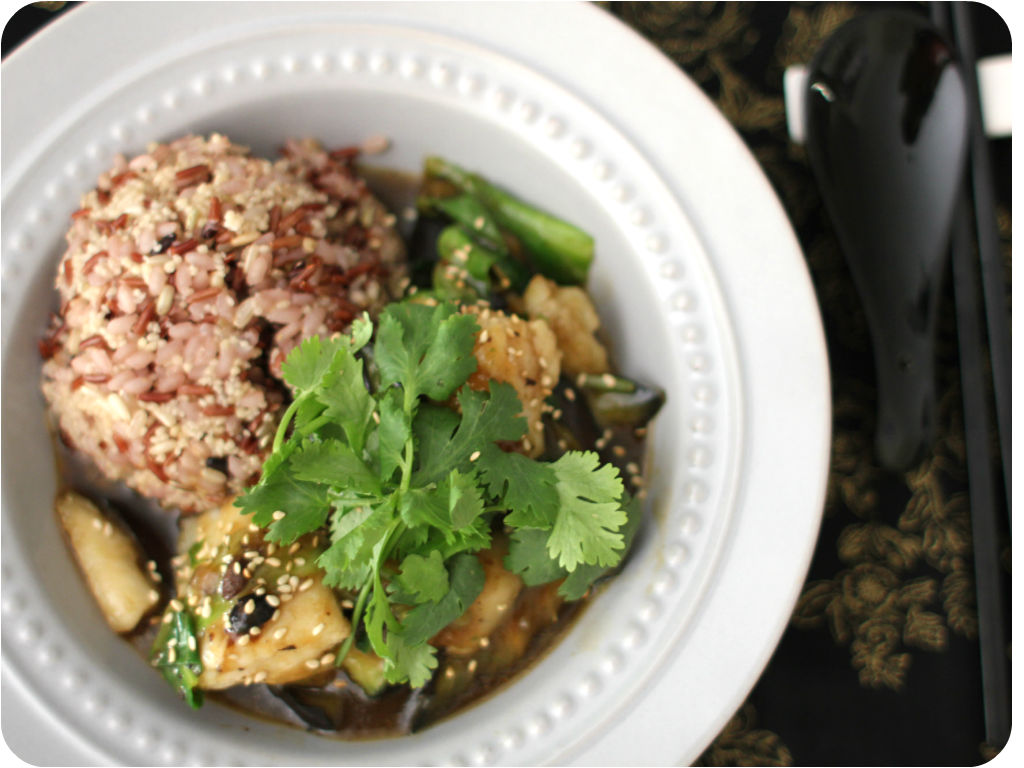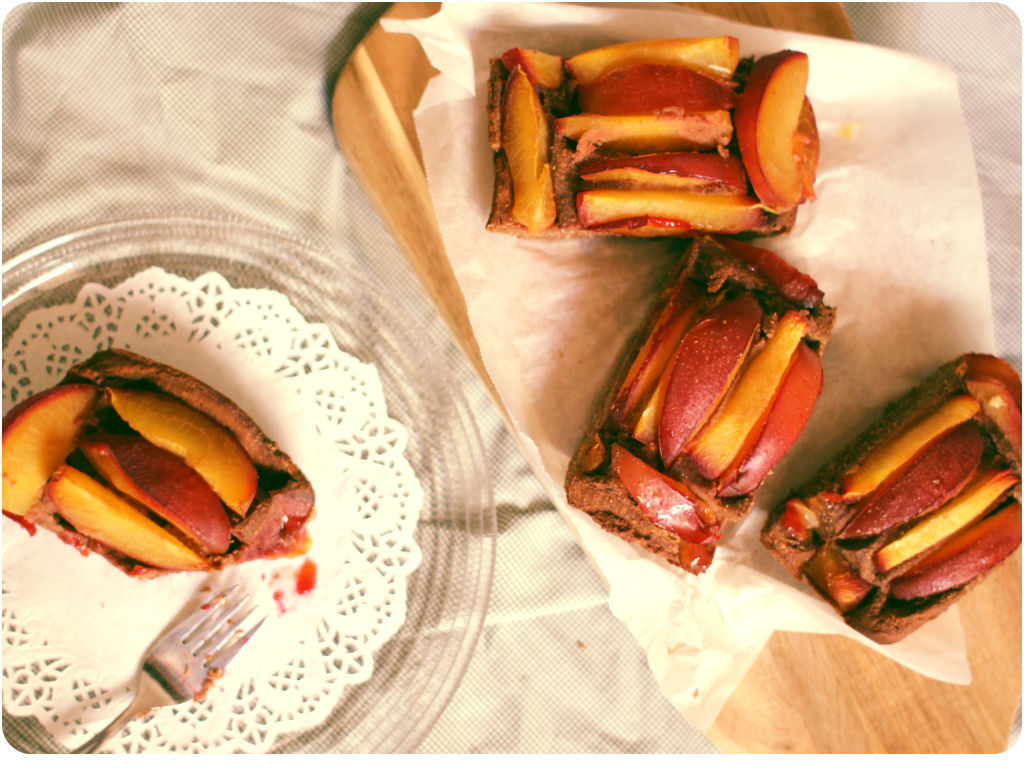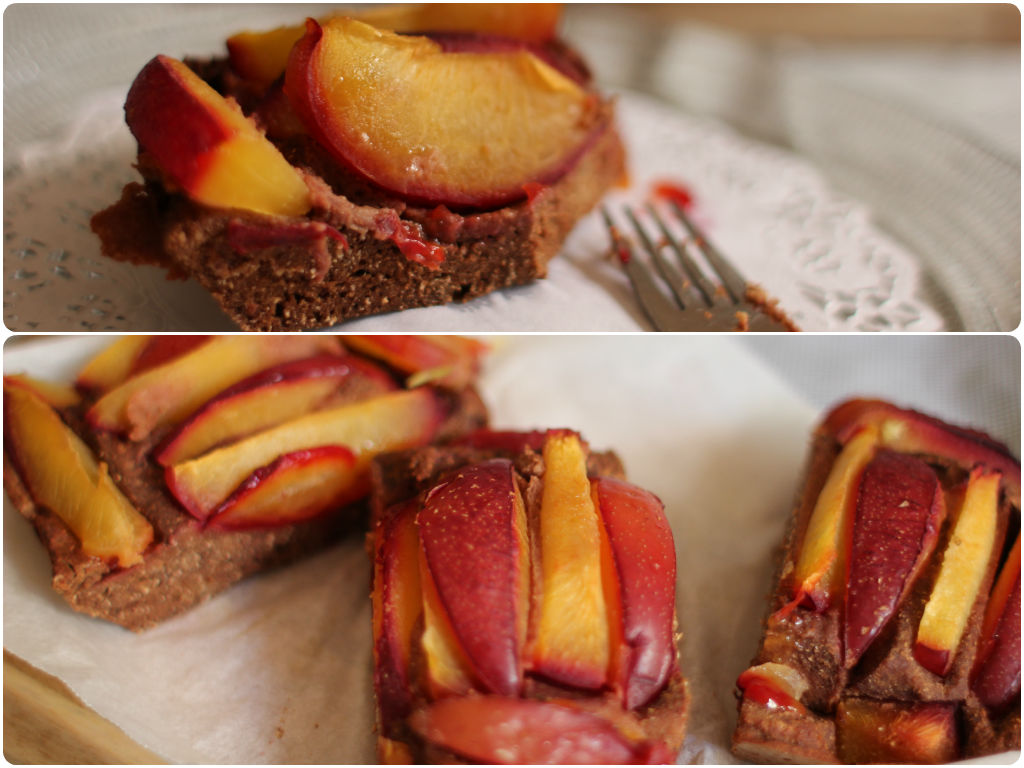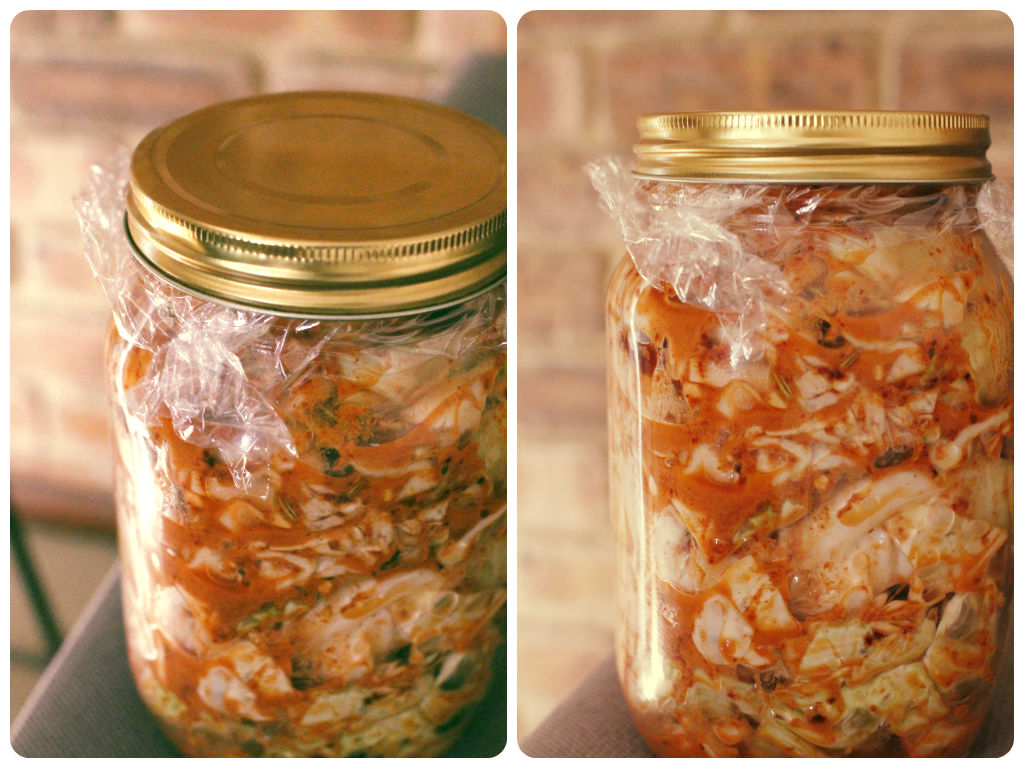
There is a few ways of cooking fish healthy; steaming, grilling, poaching, baking and stir-frying without oil. My favorite among them is stir-frying, cooking at a high heat for a very short time. I like that sizzling sound when I’m cooking. Quick and easy!
Tips for stir-frying
- Cut up my protein and vegetables into similar size and arrange them on the side, ready to go.
- Pre-heat the non-stick wok or deep skillet at medium to high.
- Cook onion, garlic, ginger first. You can add oil at this point. I tend to use a bit of water or a drizzle of coconut oil for cooking.
- Cook your protein to about 50% and take it out. Don’t crowd the pan!
- Put it back in when vegetables are cooked so that the protein is not overcooked.
- Cook harder vegetables first since they take longer to cook.
- Keep moving them making sure they don’t stick to the pan and cook evenly.
- Put any kinds of sauce towards the end.
I cut up fish fillet into a bite size same as vegetables (I used cabbage and eggplant today). Stir-fry fish and veggies as above. Then I added black bean sauce at the end to coat all ingredients. The sauce consists of black bean paste, a teaspoon of cooking wine, a teaspoon of soy sauce, a teaspoon of minced garlic, a teaspoon of brown sugar and a teaspoon of sesame oil. Mix all these ingredients in a small bowl and then add into the wok. When it’s done, top with sesame seeds and coriander leaves. Serve with rice. I find using water instead oil while stir-frying makes this cooking method healthy. You can always add a bit of sesame oil at the end to taste and for healthy fat. Enjoy x



